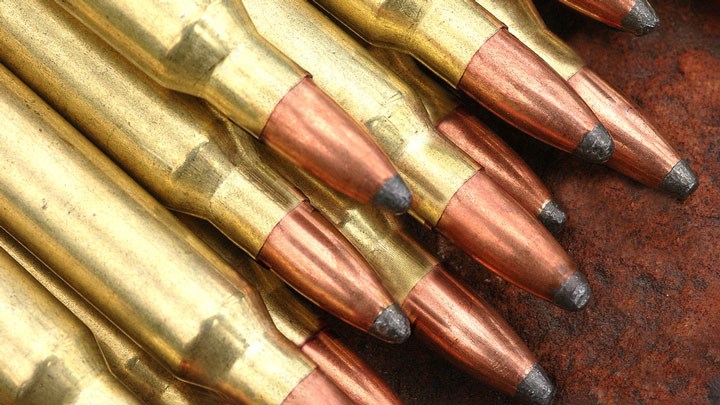
by Brian McCombie - Thursday, June 29, 2023

If one only gave the announcement a quick glance, a person might think recent news from the U.S. Fish and Wildlife Service (USFWS) was actually a plus for America’s hunters and anglers. After all, the release’s title reads, “U.S. Fish and Wildlife Service Promotes Public Access to Hunting and Fishing.”
The very first paragraph states: “Continuing the Biden-Harris administration’s efforts to increase recreational access on public lands, the U.S. Fish and Wildlife Service announced today 48 new distinct hunting opportunities on approximately 3,000 acres nationwide in the National Wildlife Refuge System.” Good news, huh?
Things get problematic, though, once a reader gets to paragraph five. This is where the USFWS informs readers that there is also a proposed rule change at work “to phase out lead ammunition and tackle at eight national wildlife refuges.” The announcement explains, “The best available science, analyzed as part of this rulemaking, demonstrates that lead ammunition and tackle have negative impacts on both human health and wildlife, and those impacts are more acute for some species … ”
Oh, and those 3,000 acres of newly opened land to hunting and fishing access? Those are to be “lead-free” acres.
Meanwhile, the USFWS’ 2023-2024 Proposed Rule that was cited in the press release would phase out lead ammunition and tackle—completely—by the fall of 2026 for the Blackwater, Chincoteague, Eastern Neck, Erie, Great Thicket, Patuxent Research Refuge, Rachel Carson and Wallops Island national wildlife refuges.
“Once again, the Biden-Harris administration is giving sportsmen a bad deal. In its latest proposed rulemaking, the U.S. Fish and Wildlife Service (USFWS) outlined its plan to ban traditional ammunition at a number of national wildlife refuges—in exchange for a small increase in hunter access,” said Randy Kozuch, executive director of the NRA Institute for Legislative Action (NRA-ILA). “The USFWS rulemaking comes as no surprise as this administration is willing to ignore the science to achieve its ultimate goal of limiting longstanding methods of take across the nation. The NRA will continue fight against sweeping bans that ignore science and pander to anti-hunting extremists.”
So, while the Biden-Harris administration dangles 3,000 new acres of federal lands open to public hunting, the same administration is working to ban lead ammo and tackle on tens of thousands of acres currently open to the use of traditional lead ammunition.
Such a ban would make hunting more difficult and more expensive for hunters who wanted to access these public lands. Non-lead ammunition, often made of copper alloys, is routinely cited as being at least 25 percent more expensive than traditional lead varieties. Non-lead ammunition also can be very difficult to find at retail operations as there simply is not that much of it made compared to traditional lead ammunition. The non-lead options available for centerfire rifle ammunition, for example, are limited to certain popular calibers.
But what about the “best available science” mentioned in the press release proving the need for the lead bans? Well, the Cumulative Impacts Report, which supports the 2023-2024 Proposed Rule changes, and the site-specific report for Chincoteague NWR, cites many scientific articles that examined lead and its negative impacts on wildlife and people. Some of those negative impacts are documented, while others are more speculative.
Either way, there are dozens upon dozens of these articles referenced by the USFWS. The sheer number of them could convince people that a lead ammunition and lead tackle ban on federal lands is well warranted. However, a number of the articles that the USFWS cited examined lead toxicity to waterfowl and bald eagles. But lead shot for waterfowl hunting was already banned years ago, in large part to help improve bald eagle populations. And while many of the other articles were able to document lead’s negative effects on other species, Larry Keane, vice president of the National Shooting Sports Foundation, the trade organization for the firearm and ammunition industries, noted a huge gap in the science presented by USFWS.
“No one disputes that lead can have a detrimental impact on an individual animal,” Keane told NRAHLF.org. “There is no science, however, demonstrating that the use of traditional lead ammunition is having an adverse population impact. That is the relevant question, because the science of wildlife management is based on the principle that we manage wildlife populations.”
Keane continued, “If the test becomes managing to prevent harm to individual animals, then you have just made the argument to ban hunting, which of course is exactly what the Center for Biological Diversity, the Humane Society of the United States, PETA and others want to accomplish. We are concerned some within USFWS, the U.S. Department of Interior and the White House share this anti-hunting view—or, at a minimum, are pandering to those organizations for votes.”
Details on the USFWS’ proposed rule banning traditional lead ammunition and fishing tackle on our national wildlife refuges are available in the Federal Register. Hunters and shooters may submit public comments on the rule through Aug. 22, 2023. To do so, visit Regulations.gov and enter Docket No. FWS-HQ-NWRS-2023-0038 to be directed to the proposed rule.
E-mail your comments/questions about this site to:
[email protected]
